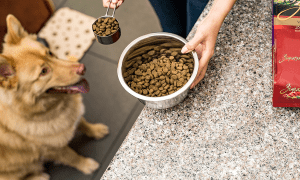“This post contains affiliate links, and I will be compensated if you make a purchase after clicking on my links.”
If you eat sugar-free chewing gum, candy, or cookies/brownies/cakes marketed as sugarless, chances are you’ve got xylitol in your purse or kitchen pantry.
Xylitol is a sugar-like substance that is sometimes listed as a sugar alcohol on food labels. This white crystal material, which appears and tastes like sugar, has been approved as a safe food additive for human consumption. In fact, xylitol is said to be the best sweetener for human teeth since it is not only natural, safe, and convenient, but effective in preventing tooth decay.
However, while this tasty nourishing substance is acceptable for humans, it is deadly for dogs.
Officials with the U.S. Food and Drug Administration are issuing a warning to dog owners about xylitol, which is a common ingredient in human foods and dental products.
Over the past several years, the Center for Veterinary Medicine at the U.S. Food and Drug Administration (FDA) has received several reports—many of which pertained to chewing gum—of dogs being poisoned by xylitol, according to Martine Hartogensis, a veterinarian at the FDA. The most recent report was related to “skinny” (sugar-free) ice cream.
Common products that may contain xylitol include:
- breath mints
- baked goods
- cough syrup
- children’s and adult chewable vitamins
- mouthwash
- toothpaste
- some peanut and nut butters
- over-the-counter medicines
- dietary supplements
- sugar-free desserts, including “skinny” ice cream
Xylitol can be used in baked goods, too, such as cakes, muffins, and pies — often because the baker is substituting another sweetener for sugar, as in products for people with diabetes. People can buy xylitol in bulk to bake sweet treats at home. In-store bakeries also are selling baked goods containing the sweetener. Some pediatric dentists also recommend xylitol-containing chewing gum for children, and these products could end up in a dog’s mouth by accident. It’s a good idea to keep all such products well out of your dog’s reach.
If you think your dog has eaten xylitol, take him to your vet or an emergency animal hospital immediately. Symptoms of xylitol poisoning in dogs include vomiting, followed by symptoms associated with the sudden lowering of your dog’s blood sugar, such as decreased activity, weakness, staggering, incoordination, collapse and seizures.
To help educate pet owners, the FDA created a flyer (download it here) that can be downloaded, printed, and shared at shelters, veterinary offices, groomers, and pet stores.





















